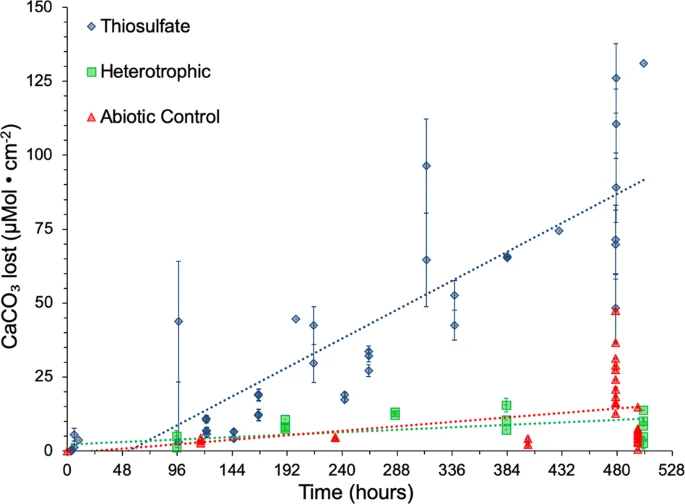Science Daily April 12, 2021
A team of researchers in the US (University of Minnesota Twin-Cities, Boston University, Harvard University) discovered that deep-sea bacteria dissolve carbon-containing rocks, releasing excess carbon into the ocean and atmosphere. They studied sulfur-oxidizing bacteria — a group of microbes that use sulfur as an energy source — in methane seeps on the ocean floor. The seeps contain collections of limestone that trap large amounts of carbon. The sulfur-oxidizing microbes live on top of these rocks, in the process of oxidizing sulfur, the bacteria create an acidic reaction that dissolves the rocks. This releases the carbon that was trapped inside the limestone. The researchers plan to test out this effect on different mineral types. The findings will allow scientists to better estimate the amount of carbon dioxide in Earth’s atmosphere, a main driver of global warming…read more. Open Access TECHNICAL ARTICLE

Mass loss of aragonite coupons in inoculated sulfidic and heterotrophic bioreactors, as well as uninoculated control bioreactors. Credit: The ISME Journal (2021)